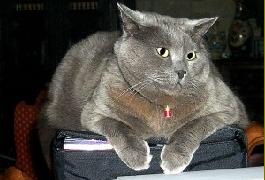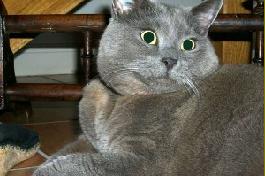|
|
||


|
Like every other animal, the cat has a system for communicating that is related to brain capacities and needs. The success of these studies was really spectacular. Nevertheless, their most important outcome remained unknown to most people. Researchers had hoped that the monkeys had initiated a sign language (beleived to be richer than their current facial language) that, in turn, could be taught to their children and friends. In actual fact, nothing happened. The educated apes that had held discussions with their counterparts had only used traditional facial language. |
||



|
However, on reflection, it is clear that what happened was perfectly normal. Besides, researchers might have been able to foresee this before launching their experiment. For instance, French people living in the United States will use the English language to talk to Americans, but they will still speak French with other French people living over there. Why should apes have a different logic to ours? |
||
|
YOUR CAT SPEAKS TO YOU. |
||
|
CLICK HERE: |
||
